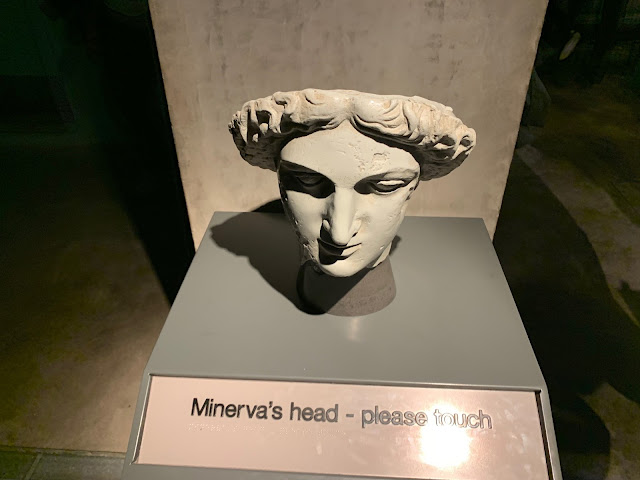During my visit to the UK, the Roman Baths were at the top of my must-see list. My passion for history was fully satisfied by their stunning beauty. Our day trip included Stonehenge and Bath, which proved to be a fantastic experience, making for an unforgettable day.
 |
| The beautiful baths |
Upon entering the baths, we received a complimentary audio guide which allowed us to explore various parts and learn about the different sections. Witnessing the ruins and absorbing the history was incredible. There was even a segment at the conclusion where we had the opportunity to sample the renowned warm water from the spa's water fountain, enriched with approximately 43 minerals. It had a unique taste.
 |
| The beautiful Mosaic floor. |
I hadn't realized the extent of what the Roman Baths had to offer. Initially, I thought it was simply a matter of walking in to view the baths, but one could easily spend an entire day exploring the history, examining the ruins and sculptures, and more. It's genuinely breathtaking.
 |
| The Roman baths and the temple in the 4th century AD |
The original Roman baths, constructed around 60-70 AD, are now over 2000 years old. They held significant religious importance for the Romans, who, upon discovering the bubbling hot springs, believed them to be the work of the gods. In reverence, they would cast valuable offerings into the waters to appease these deities.
 |
| Underground Sauna |
Within the museum, you can anticipate encountering a variety of rescued artifacts such as coins and jewelry.
 |
| Some of the rescued items |
The Roman Baths were opened to the public in 1897, coinciding with the completion of the terrace. This terrace overlooks the main swimming bath and is adorned with statues of Roman governors and emperors, including figures such as Julius Caesar and Constantine the Great.
 |
| The Baths and the statues |
Next, you will encounter the hot spring that surfaces at the King's Bath, constructed in the 12th century AD. Below the King's Bath lies a reservoir, a testament to the ingenuity of Roman engineering.
 |
| The Hot Spring |
In the 18th century, doctors began prescribing thermal water as a treatment for various health issues. This water was obtained from a pump room, which now serves as a restaurant adjacent to the Roman Baths.
The Romans combined the Celtic goddess Sulis with their goddess of healing, Minerva, creating the deity Sulis Minerva and erecting a temple in her honor. The golden head of Sulis Minerva, a significant archaeological discovery in Roman Britain, can be viewed in the deep underground section of the Baths. It was originally part of a temple statue.
 |
| The Golden head of Sulis Minerva |
 |
| This was a replica of the statue head that you could touch. |
There is so much more to see in the Roman Baths. It was incredible to see it. I learnt so much that day.
 |
| The Baths are green from the algae built up over the years. |
The entire walkthrough took approximately one and a half to two hours, and it was indeed worthwhile.
Have you ever had the chance to visit the Roman Baths? Or taste the water from the warm springs? What were your impressions?
That concludes today's post; I hope you found it enjoyable.
Until the next time,
xoxo, Danii
(P.S. Our visit was in May 2019)
Pin it

.png)






3 Comments
Great Post! Love Bath
ReplyDeleteBath is on my travel bucket list. Love Ur post and how u structured it.
ReplyDeleteThank you so much :)
Delete